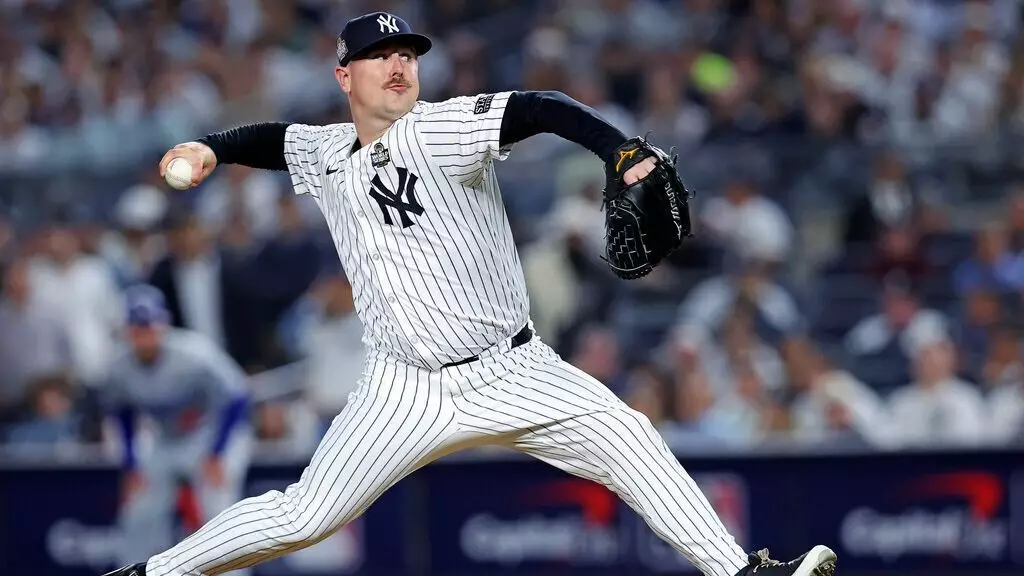Salary arbitration plays a pivotal role in Major League Baseball (MLB), providing a structured process for players and teams to resolve salary disputes without resorting to open market negotiations. This process is particularly important for younger players and those with limited experience, as they seek to secure fair compensation based upon their performances. The arbitration process typically involves the exchange of salary proposals between the player and the team, followed by a hearing where an independent panel of arbitrators makes a final ruling. Recently, the arbitration outcomes for players Mark Leiter Jr. of the New York Yankees and Dennis Santana of the Pittsburgh Pirates illustrate the complexities and challenges players face in this system.
Mark Leiter Jr. was at the center of a notable arbitration case this past Saturday. The 34-year-old reliever had initially sought a salary of $2.5 million but was ultimately awarded $2.05 million. This decision came from a panel comprising Allen Ponak, Robert Herzog, and Scott Buchheit after hearing arguments presented the previous day. Leiter’s situation is particularly interesting; he had a competitive season, ending up with a 4.50 ERA over 60 relief appearances after splitting time between the Chicago Cubs and the Yankees last year.
Leiter’s tenure with the Yankees was characterized by moments of intensity, such as his noteworthy performance during the American League Championship Series. His responsibility for closing out critical innings in high-stakes games not only showcased his pitching skills but also illustrated the pressures players face when negotiating their worth in arbitration. By falling short of his desired salary, Leiter’s case underscores the intricacies of evaluating a player’s value based on their previous season’s performance versus their potential impact on the team’s success.
On the other end, Dennis Santana, a 28-year-old right-handed pitcher, found himself in a similar predicament. His arbitration case revealed that he would earn $1.4 million instead of the $2.1 million he requested. Santana’s journey from the Los Angeles Dodgers to the Pirates via waivers highlights the often unpredictable nature of player contracts in MLB. Last season, he posted a 3.89 ERA in 62 relief appearances, underscoring his ability to contribute significantly to his teams despite the lesser financial outcome in arbitration.
Santana’s case emphasizes a recurring theme in the arbitration process: the negotiations often reflect past accomplishments rather than future potential. As a player who has shifted between teams, the narrative of value becomes even more convoluted. His overall career statistics suggest a solid, yet not dominant, performance over seven seasons that may have influenced the arbitrators’ decision to lean in favor of the Pirates.
These arbitration decisions not only affect the individual players but also cast a shadow over the teams involved. With the Yankees losing their first arbitration case since 2017, it raises questions about how they assess player value, especially as they strive to balance competitive salaries while managing their payroll. For the Pirates, securing Santana at a lower salary reinforces their strategy of risk management in roster assembly.
As of now, the arbitration landscape remains active, with several players yet to have their hearings. The uncertainty of these outcomes looms large, as evidenced by other notable players scheduled for decisions in the coming weeks. Their collective experiences will help to shape the narrative around player compensation and value leading into the new season.
The salary arbitration process in MLB serves as a complex and sometimes contentious backbone of player-team relationships. As exemplified by the outcomes of Mark Leiter Jr. and Dennis Santana, players often find themselves navigating the fine line between personal performance metrics and broader market evaluations. The decisions rendered by arbitration panels play a critical role in setting precedents for future cases while reflecting the evolving nature of contracts within professional sports. As more hearings are set to take place, the ultimate resolution of these disputes will be closely watched, impacting not just the players involved but also the strategies of their respective franchises in the highly competitive landscape of Major League Baseball.

